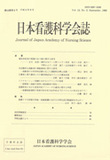Japanese
English
- 販売していません
- Abstract 文献概要
- 参考文献 Reference
要旨
非活動的高齢者に運動援助を行う際,どの程度の運動なら安全であるかアセスメントする必要があるため,その方法の一つとして,日常身体活動の程度に応じて個別に目標心拍数を設定する方法を検討した.
高齢者スポーツ講座の参加者を対象に,講座日とそれ以外の平日に24時間心拍数を連続測定した.2回とも測定できたのは,男性10名(年齢68~85歳),女性10名(年齢63~74歳)である.なお血圧,体重,既往症,日常の運動習慣,睡眠時間等も調べた.
20名の日常身体活動は,①少活動型;運動習慣がなく徒歩・自転車外出も少ない,②ゆっくり志向の活動型;ゲートボール,1週間に4日以上,③機敏志向の活動型;トリム,ダンス等,1週間に1~3日,の3型に分かれた.②に属する人の多くは境界域高血圧・高血圧であった.
24時間心拍数の分布の上限値に基づき,日常身体活動が①以下の非活動的なケースと②のケースでは,当初の目標心拍数として90拍/分台が適当と考える.なお,100~120拍/分を目標にしてよいのは③のケースである.
Abstract
The purpose of the present study was to determine the target heart rate during physical exercise adjusted to habitual physical activity in order to aid inactive aged persons.
Heart rate (HR) were recorded continuously for 24 hrs from 16:00 with portable HR memory to see the level of physical activities in 10 men (aged 68-85yrs) and 10 women (aged 63-74yrs). They were members of a sport class for the aged. Anamnesis and informations abous hours spent for sport, walking, cycling, and sleep were taken from the subjects. HR and blood pressure at rest and body weight were measured every week before exercise.
Pattern of habitual physical activity of individual case is (1) inactive, or (2) active but slow-moving; play gate-ball, over 3 days/week, or (3) active and quick-moving; play trim gymnastics, folk dance, or table tennice, 1-3 days/week. The majority of active but slow-moving ones are border hypertensive or hypertensive. On the basis of peak HR during 24hrs, HR 90s beat/min is considered to be optimal as the initial target HR for inactive or active but slow-moving ones, and HR 100-120 beat/min is optimal for active and quick-moving ones.
Copyright © 1992, Japan Academy of Nursing Science. All rights reserved.


